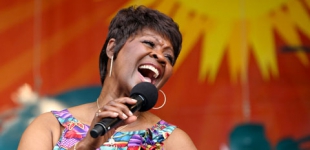Soul music is a genre of popular music rooted in the African-American experience. The concept of “soul” has both metaphysical and earthly connotations. In music, it is both a trait of certain music and later a certain kind of music itself. New Orleans has had a great influence on soul music, and the soul music from this region has unique certain aspects.
The term “Soul” has been used to convey a true authenticity or deep feeling specific to African-Americans in many different types of music including jazz, blues, rhythm-and-blues, gospel. In the 1950s and 1960s, rhythm and blues started adapting certain vocal and musical techniques from gospel music. These included melisma, shouts, call and response between the band and background vocalists, cries, bent notes, and improvised vocal inflections. Songs also adapted gospel harmonic progressions or simply copied them while changing the words to focus on love and the sexual desire rather than God, Jesus, or heaven. As time went on, rhythmic changes occurred including the use of triplets in ballads and the move from shuffle to even note rhythms. In its essence, soul music “elevates feeling above all else,” as critic Clive Anderson says.
Soul music started in the South in the late 1950s with Ray Charles, James Brown and Sam Cooke (all former member of gospel groups) being the first popular singers to combine rhythm and blues with gospel. Ray Charles’ “What’d I Say” takes its form and sound from rural, Baptist, and other demonstrative church services. James Brown’s vocal exhortations on “Try Me” and “Please Please Please” come straight from the pulpit. Later, other singers started working in this vein with innovative voicings and harmonies, including the likes of Curtis Mayfield, Solomon Burke, Otis Redding, and Aretha Franklin. As the 1960s continued, bass syncopation became more prominent while horn arrangements were frontloaded in the mix – both on the breaks and working in call-and-response tension with the vocals. Many soul songs reflected the changes in civil rights and youth culture, and towards the end of the 1960s, the genre became infused with Black Power rhetoric, from “Black is Beautiful” to James Brown’s “Say It Loud: I’m Black and I’m Proud.”
Soul music was also a regional music with a range of geographical accents. The soul music coming out of Detroit on Motown differed from the soul music on the Stax/Volt labels in Memphis or that of the Atlantic Records’ soul shop in Muscle Shoals, Alabama. Although Louisiana was never a center of soul, New Orleans has had its share of distinctive soul singers and producers, distinguished by its gospel foundations and a piano-centered composition style. Robert Fontenot notes that New Orleans soul has an element of boogie-woogie underneath, less guitar (rhythm or lead), and a preponderance of saxophones. New Orleans soul rhythm shifts from shuffles to even-note grooves to triplets, and often includes Caribbean and Latin American rhythms. In New Orleans soul one can also hear the city’s second-line, marching-band, and parade rhythms, reflecting the city’s geography and history.
The two most famous soul singers from New Orleans are Irma Thomas and Aaron Neville. Thomas pulls off the trick of sounding vulnerable and defiant on her tracks such as “It’s Raining” or “Breakaway.” Neville’s ethereal voice made “Tell It Like It Is” a huge hit, but he expresses earthier sentiments in “Over You” and “Hercules.” Others New Orleans soul singers include Johnny Adams (whose falsetto elevates such tracks as “Release Me” and “I Won’t Cry”.), Chris Kenner (who based his hit “Land of 1,000 Dances” on the spiritual “Children Go Where I Send Thee”), Ernie K-Doe, Lee Dorsey, Tami Lynn, and Jessie Hill. Allen Toussaint is responsible for most of these soul songs on the Minit and Instant labels and they have his indelible stamp of his compositional style.
Other Louisiana soul singers have made their mark on Louisiana soul. Mighty Sam McClain from Monroe connects soul to the rhythm-and-blues tradition, as have Carol Fran (from Lafayette) and Bettye Swan (from Shreveport).
References:
Berry, Jason, John Foose, and Tad Jones. Up from the Cradle of Jazz: New Orleans Music Since World War II. Lafayette: University of Louisiana at Lafayette Press, 2009.
Guralnick, Peter. Sweet Soul Music: Rhythm and Blues and the Southern Dream of Freedom. Boston: Little, Brown, and Company, 1999.
Hannusch, Jeff. The Soul of New Orleans: A Legacy of Rhythm and Blues. Ville Platte, LA: Swallow Publications, 2001.
Shaw, Arnold. Honkers and Shouters: The Golden Years of Rhythm and Blues. New York: Collier Books, 1978.





